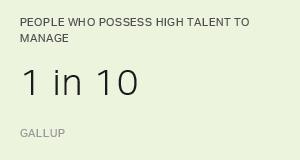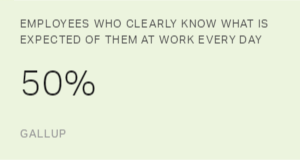When employees leave a company, many often take valuable attributes like knowledge and experience with them. But departing employees might also walk off with something more intangible: a piece of the company's established corporate culture.
The latter is a serious problem, because culture is instrumental to an organization's performance; it either facilitates and supports success or undermines and inhibits it. Together with purpose and brand, culture forms a core component of an organization's identity. Companies can ill afford to have their vital and carefully created corporate cultures become victims of attrition.
In the U.S. today, there are a number of forces currently affecting culture flight from organizations. The past few years have seen steady, if not overwhelming, improvement in the job market, no matter which metric of employment data tracking you follow. The proverbial "Now Hiring" sign is appearing more frequently, and many workers are finding more opportunities to take their abilities elsewhere.
Additionally, organizations across all industries are prepping for the increasing exodus of retiring baby boomers. They represent a significant portion of the workforce at many organizations, a swath of long-tenured employees whose collective experience and accumulated knowledge are critical to organizational performance.
No matter their reasons for leaving, when experienced employees exit an organization, their departure may shift the company's culture, even if only subtly. Certainly, human resources functions strive to refill any gaps in knowledge, experience and ability. But accounting for a potential hire's impact on culture isn't as easy as reviewing a section of her résumé. And neither is assuming that current employees, many of whom are newer to the company than the people they're replacing, can step into these vacated roles and seamlessly maintain an organization's culture.
Replacements are less likely to have an understanding of the cultural nuances within the organization. In turn, there is potential for a company's culture -- and more broadly its very identity -- to unintentionally change with an influx of new employees and new leaders. In some cases company leaders may welcome culture change, but in others it creates a risk for losing what makes the organization a unique place to work. Either way, culture shift is yet another fluid and foundational aspect of an organization that should be measured and managed intentionally.
Gallup's experience has shown five steps leaders should take to intentionally manage culture and minimize the potential risks brought by attrition.
1. Clarify the desired culture. What makes an organization stand out? Does it provide outstanding customer service? Does it offer a unique product or service? A passionate and committed workforce? Employees must clearly understand how their company wishes the marketplace to perceive the organization and how the culture promotes that perception. This starts with a real understanding of the organization's purpose and how it translates to the brand.
At the most fundamental level, why does the organization exist? How does it want others to know or view it? Clear brand and purpose intentions are critical to creating a culture that aligns with and supports those desires.
2. Understand what shapes behaviors in the current culture. The behavior of employees at work and how they get work done defines a culture. Employees routinely receive communication, feedback, examples and other information that influences their behavior each day. It's important to align these messages to ensure they support the organization's desired culture. In some instances performance incentives have a large impact on behavior. In other cases it may be an organization's mission or values that have a heavy influence on the way in which work gets accomplished. To create and sustain a consistent culture, the organization should understand the key drivers of its own culture.
3. Communicate intentionally about the culture. Once a company has clearly defined the desired culture of the organization and identified the key methods of influencing behavior, it must undertake deliberate activities to promote them. These activities can vary from leadership communication that articulates for employees what makes the organization unique to programs teaching employees how to connect the organization's values with the work they do each day.
Selection and onboarding programs should be used to identify unique types of people and talents that are able to make their culture and brand come to life. For example, a client Gallup worked with in Australia measured not only the talent of applicants for open jobs, but also examined how those applicants' personalities aligned with the desired culture of their organization. Subsequently, each hire they made naturally reinforced their culture. Intentional and consistent use of these and other drivers can reinforce the desired culture of the organization. Architects of the organization's culture should also ensure they are communicating with all employees, but especially with those who may be replacing workers, and that this communication includes messages that clearly align with the desired identity.
4. Monitor the strength of the culture. How would a company know if attrition is weakening its culture? Would executives find out before it was too late? Companies must collect information about the status of their culture throughout the organization; you won't know if you don't ask. So, companies must be deliberate and focused when trying to understand from employees and leaders alike any strengths and challenges related to their company's culture. This measurement should also be specifically tailored to a company's unique culture, and not a standard measure that could be applied to any organization.
5. Include culture as a key component of transition plans. Coworkers and managers play an important role in establishing workplace culture. As current employees leave, organizations should create intentional plans to not only fill the void in output, but also to ensure the company's culture is sustained. This may mean promoting a first-time manager to a new role. Or making an effort to make sure the manager not only has the talent to lead and engage her team, but also has the capability to do it in a way that maintains the desired culture of the organization.
In some instances, departing employees may be role models in living out the organization's values. Think about the person who actively volunteers in the community, or someone who is a public embodiment of some aspect of an organization's identity. How can companies identify another team member who can continue to promote this aspect of the organization? And what about the exiting employees who may be key representatives of the brand to specific customers or clients? Organizations must identify and connect those customers with other employees who also embody and deliver the brand and experience, so as to keep customers engaged with the organization.
All organizations face risks when employees choose to leave. No matter the external job climate, it's important for leaders to make intentional efforts to create a culture and organizational identity that is unique and resonates with employees and customers alike. Beyond simply finding workers who fill the knowledge and skill requirements of departing employees, organizations should make an intentional effort to ensure their desired culture and brand are maintained -- and potentially strengthened -- throughout this transition.
Learn how Gallup can help align your organization's purpose, brand and culture.


